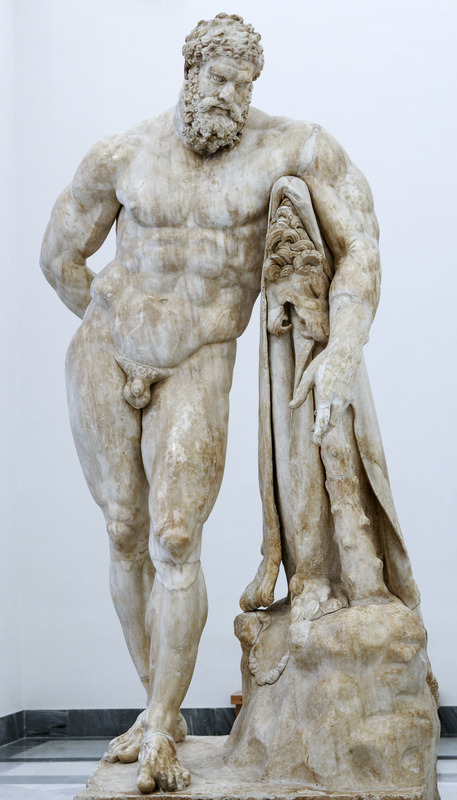Sculptures
The baths' luxurious decoration included freestanding sculptures. These sculptures were either placed on bases on the floor of the baths, or in special niches in the walls, some of which can still be seen today. Furthermore, some of the statues in the niches had pipes for water, allowing water to flow out of the base of the statue, or out of out the statue itself.1 The statues were usually made of marble that was then painted or of bronze. Unfortunately, once the baths were abandoned, many statues were either melted down or reused.
Excavations conducted at the baths starting in the 16th century offer insight into the statues' display.1 For example, one of the earlier statues to be discovered was the Farnese Herakles. While there is no detailed record of the excavation itself, it is still possible to determine where it was placed in the baths. This is because of drawings made both during the excavations and after, which have accompanying notes, as well as one drawing by Sangallo the Younger showing the statue in location.2 Based on what has been found, it seems that the majority of the sculptures in the baths depicted mythological scenes and people. Moreover, many of the sculptures are enormous, mostly larger than life-sized.
1Miranda Marvin, "Freestanding Sculptures from the Baths of Caracalla," American Journal of Archaeology 87, no. 3 (1983) 350.
2Miranda Marvin, "Freestanding Sculptures from the Baths of Caracalla," American Journal of Archaeology 87, no. 3 (1983) 355.
